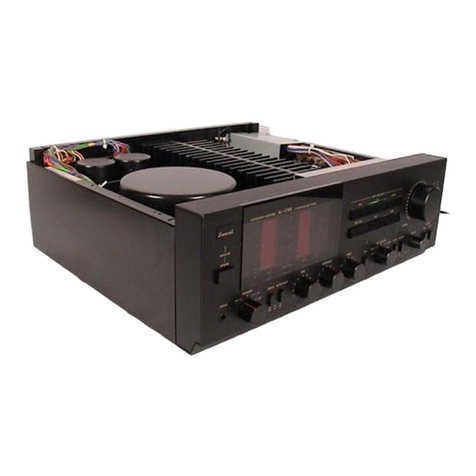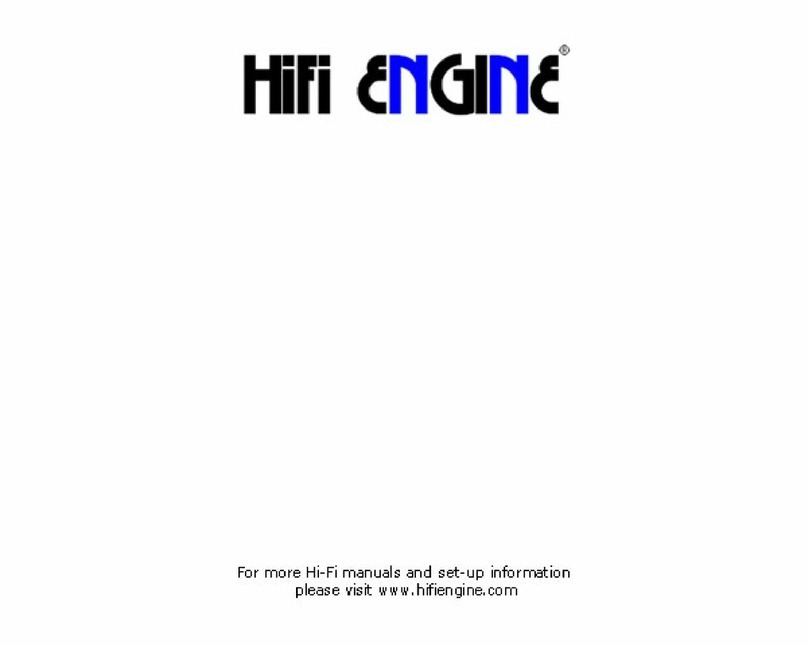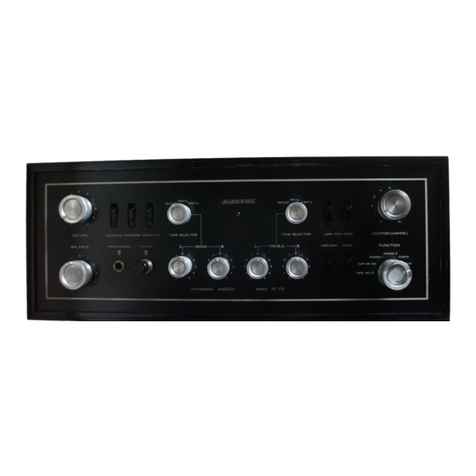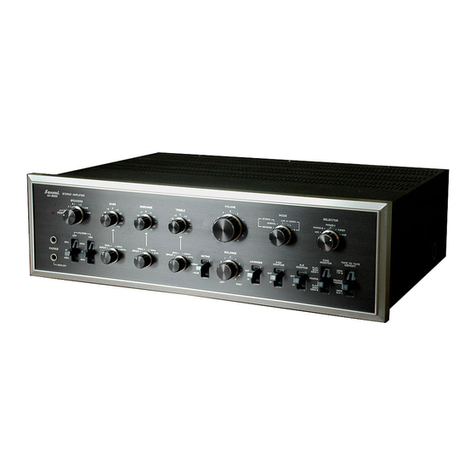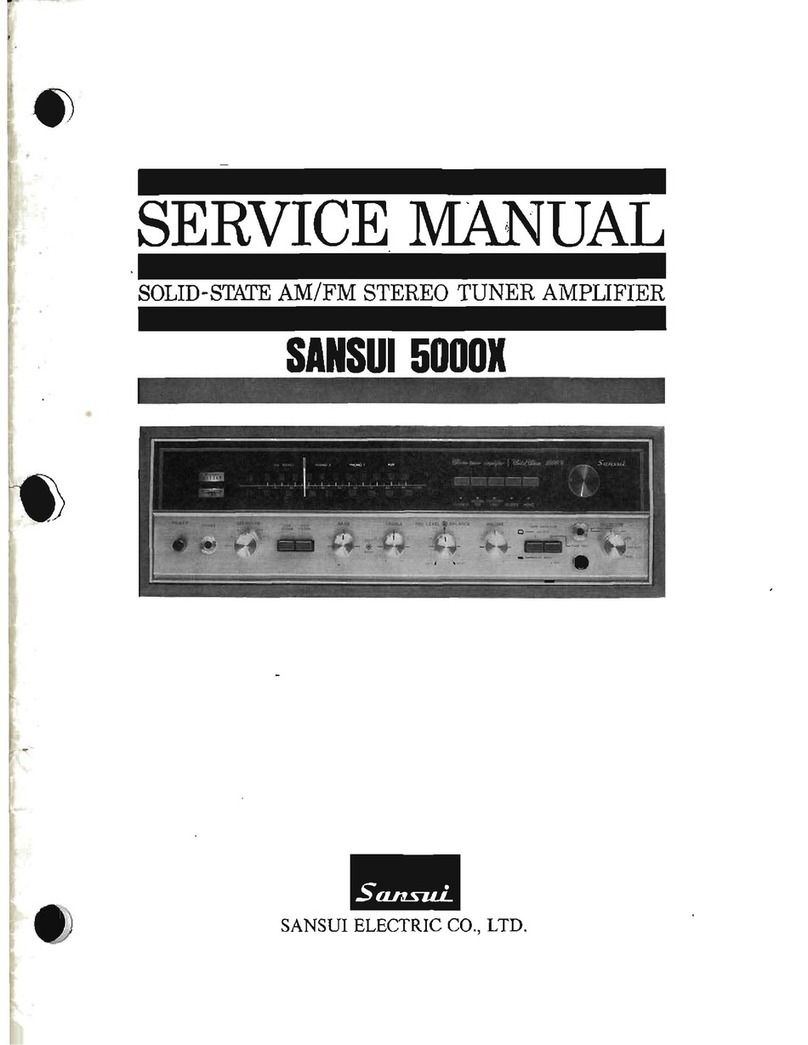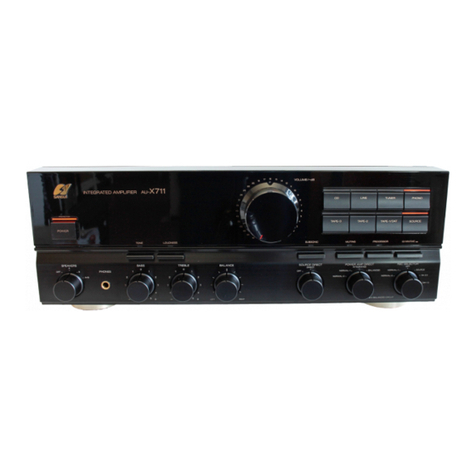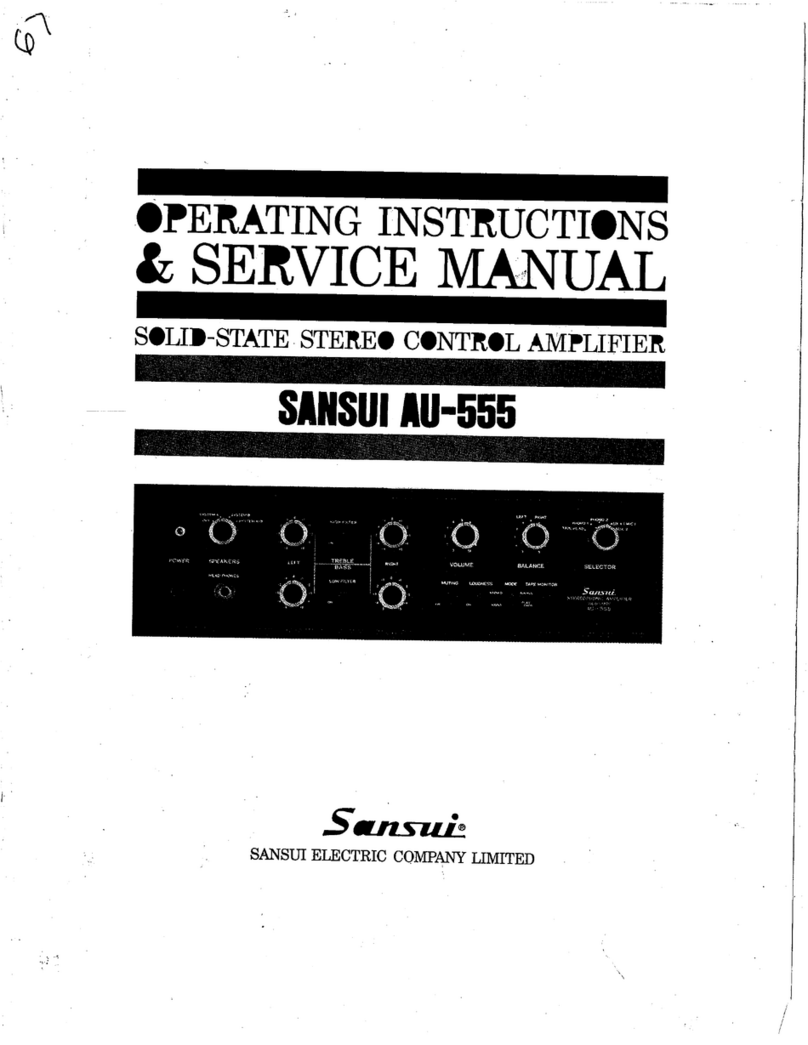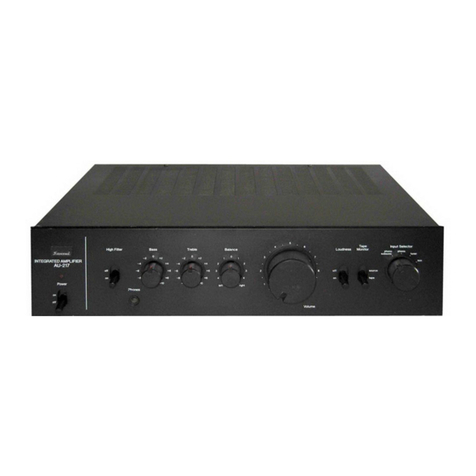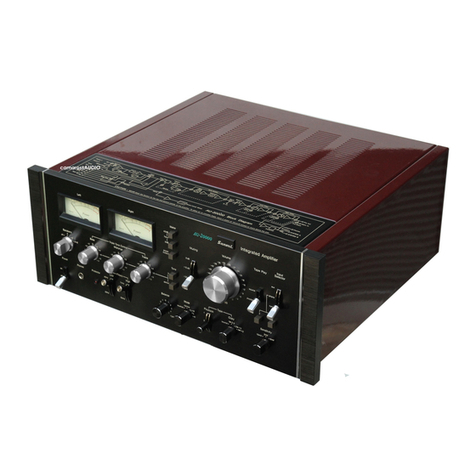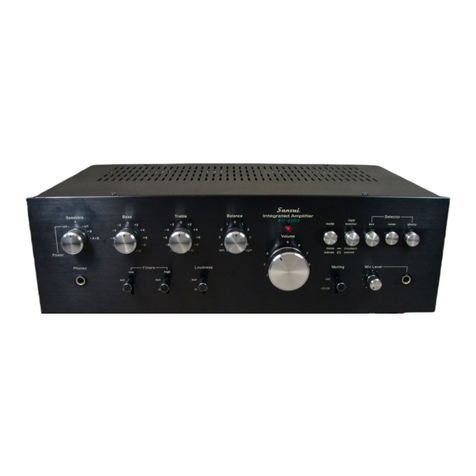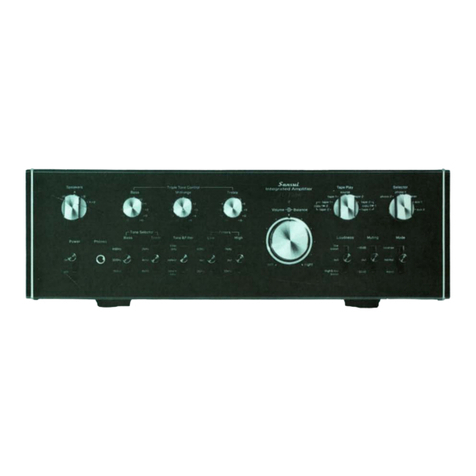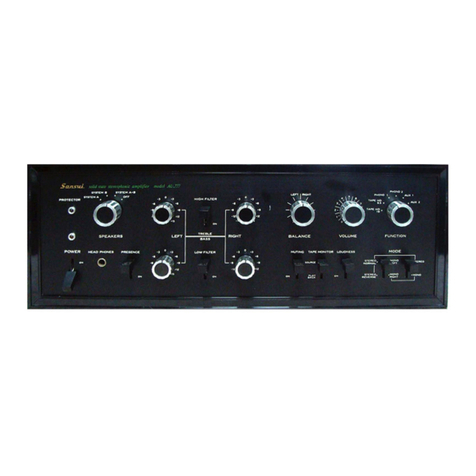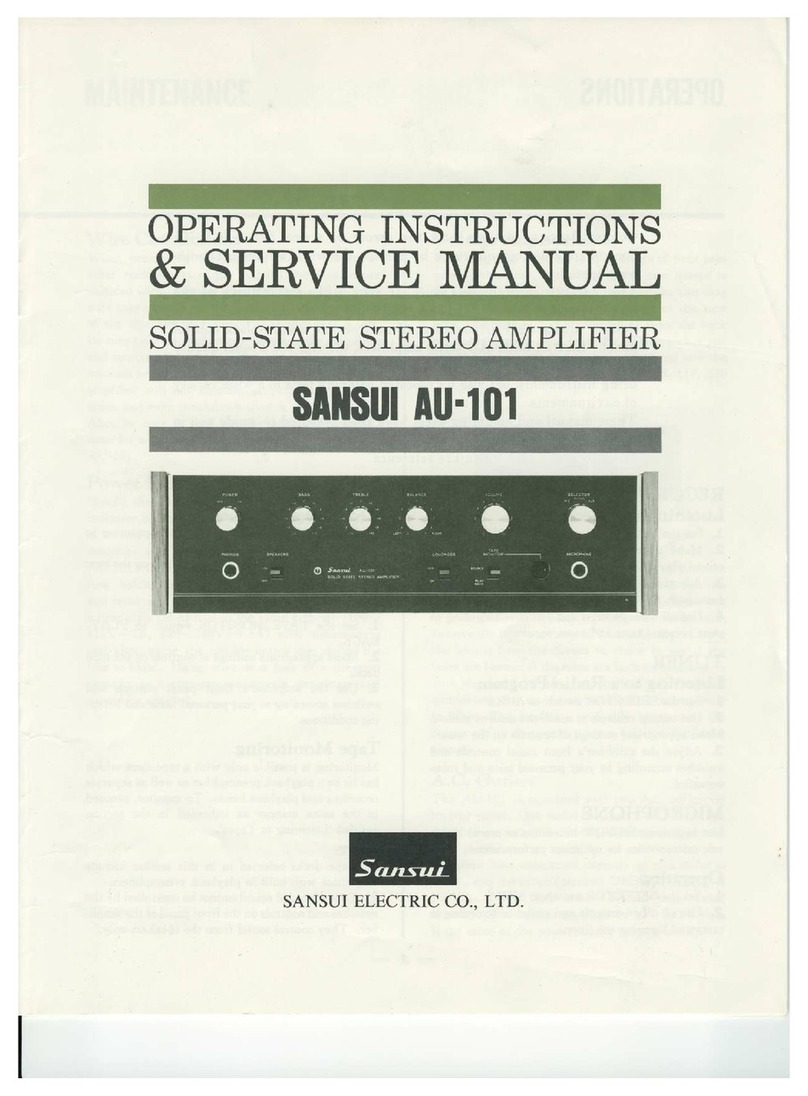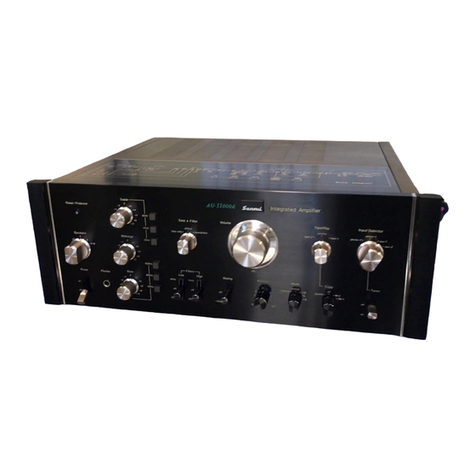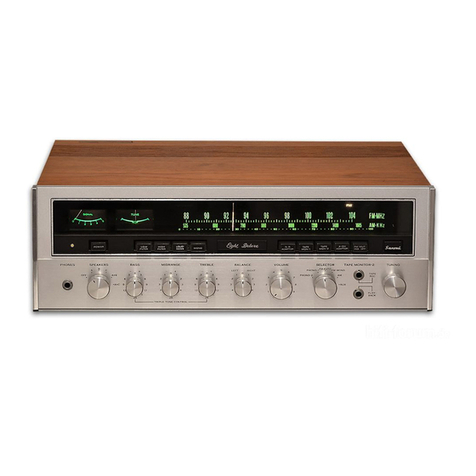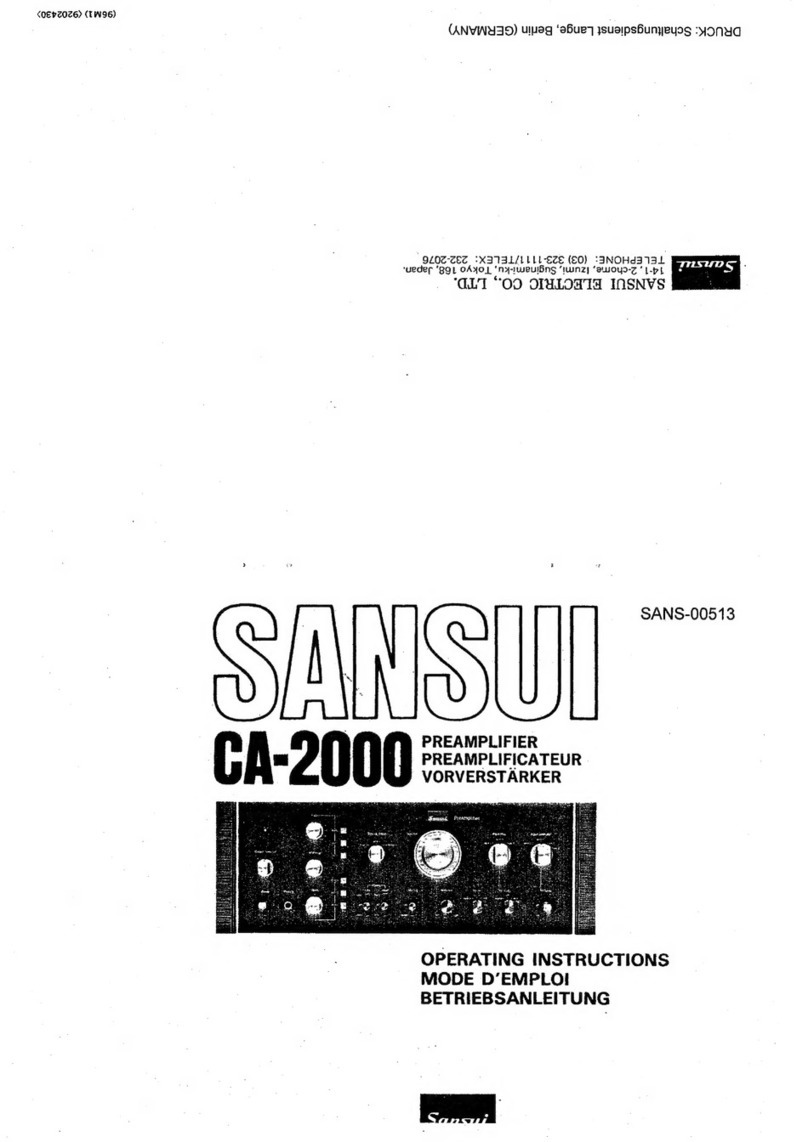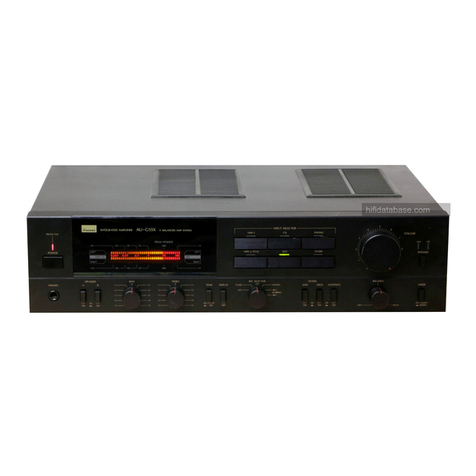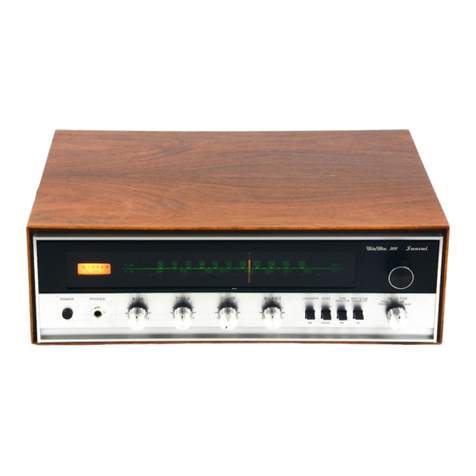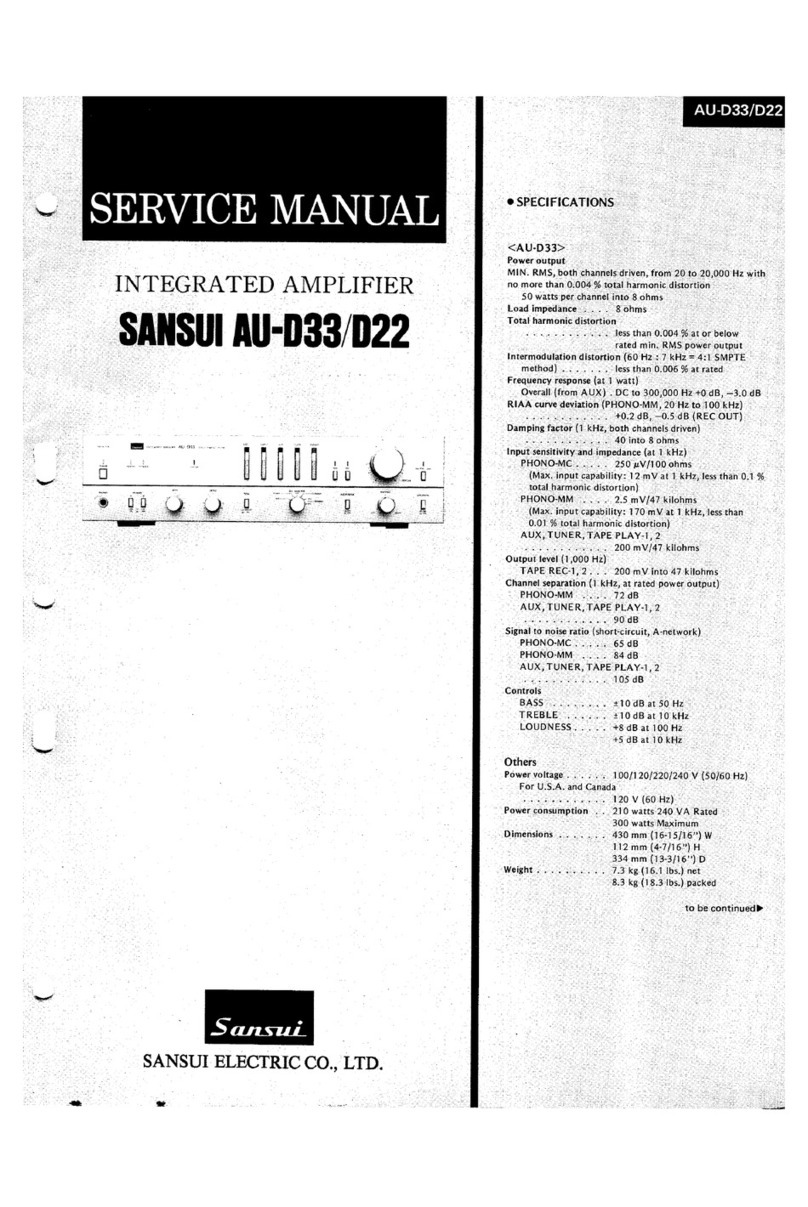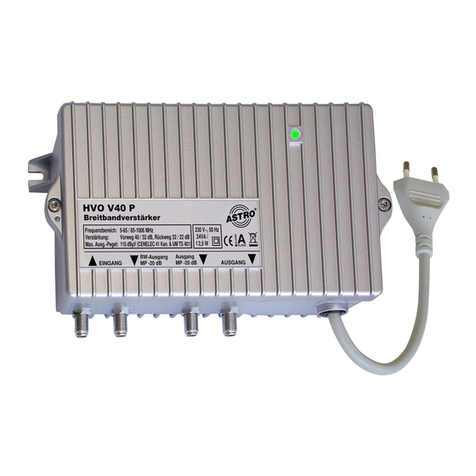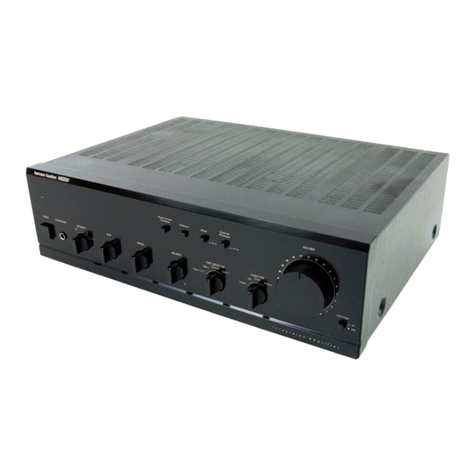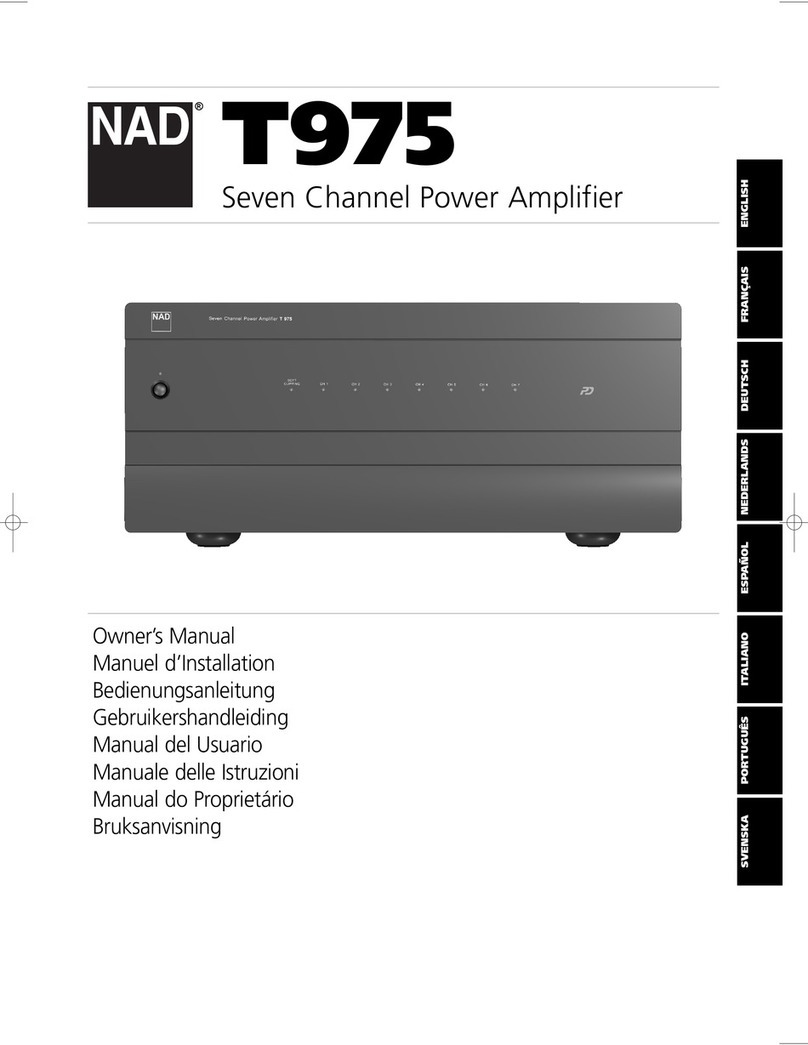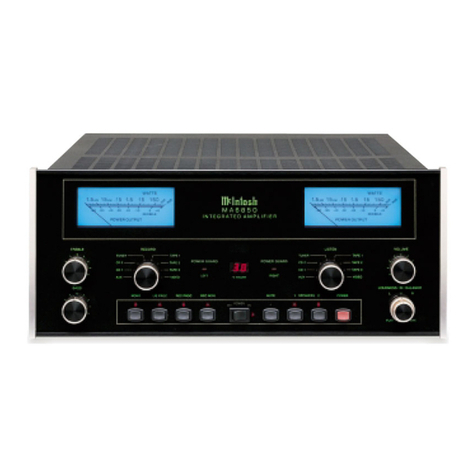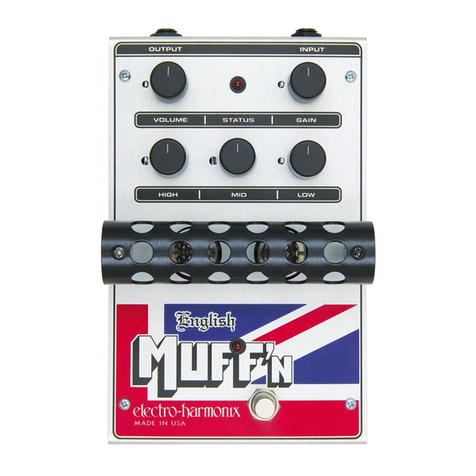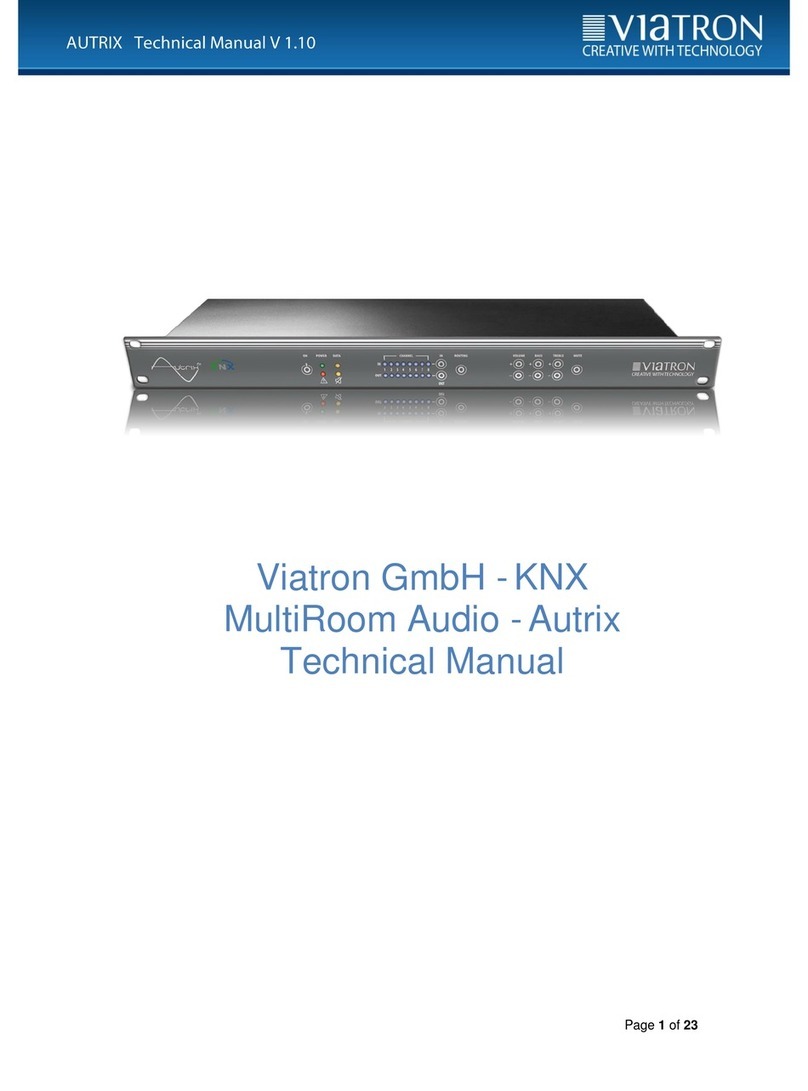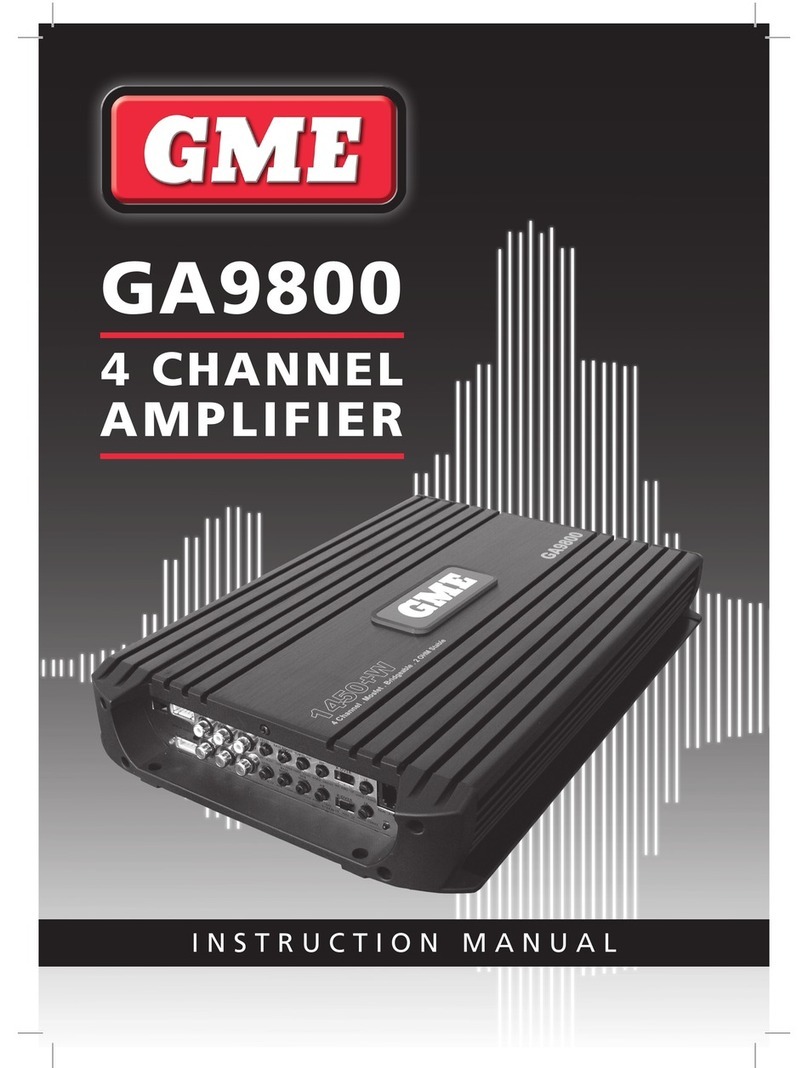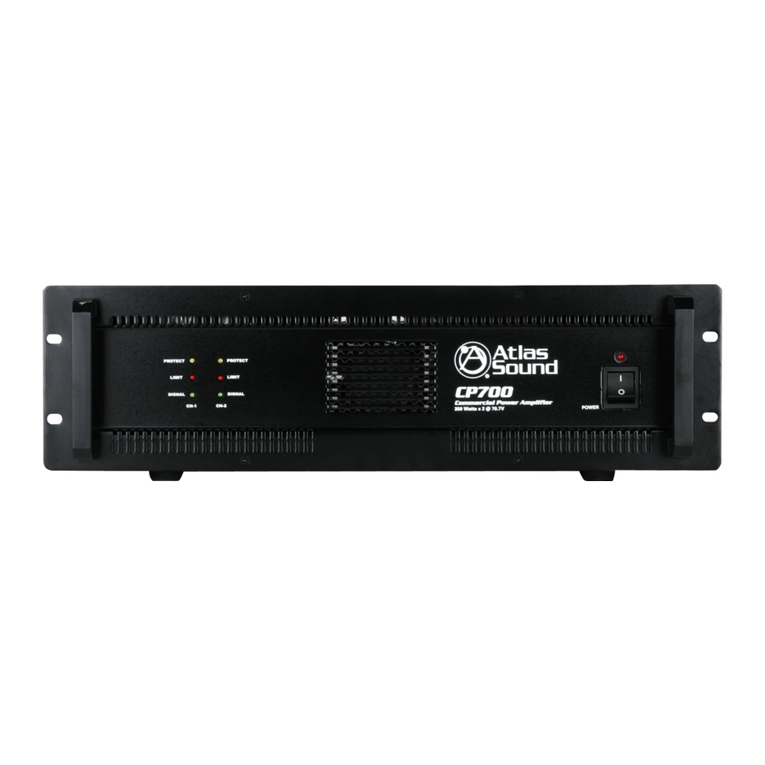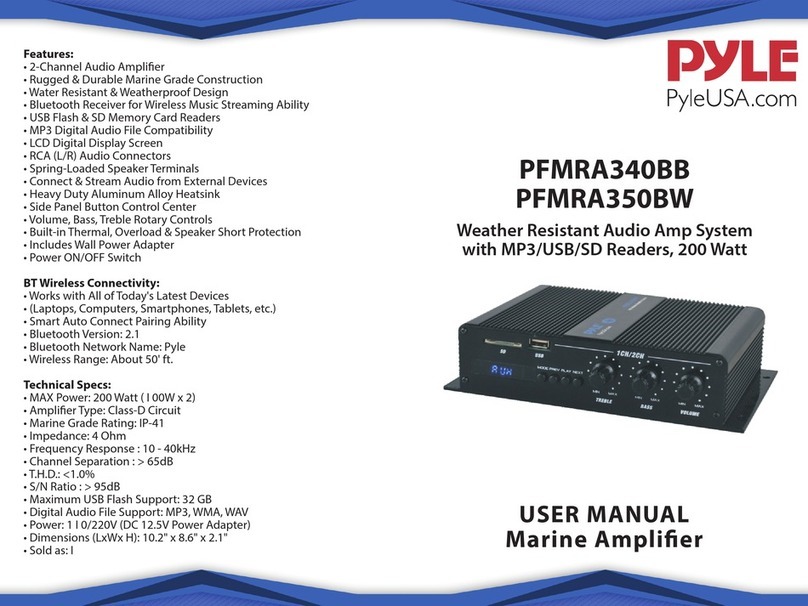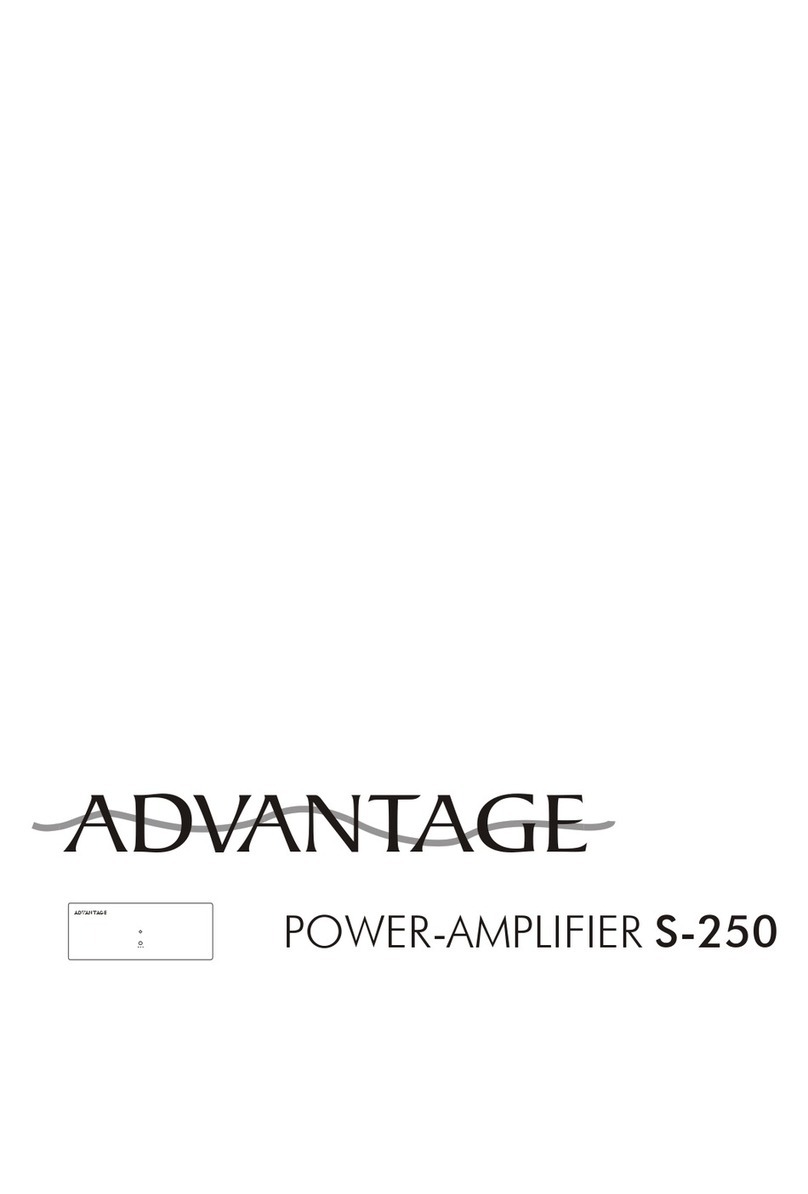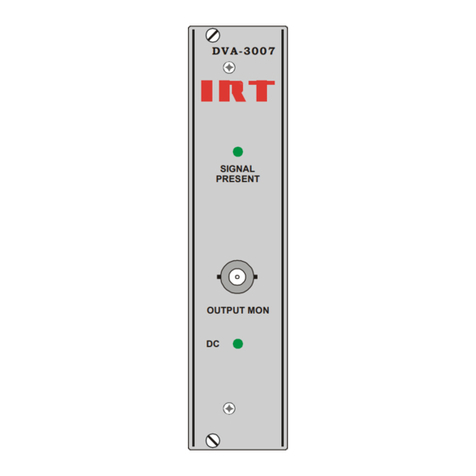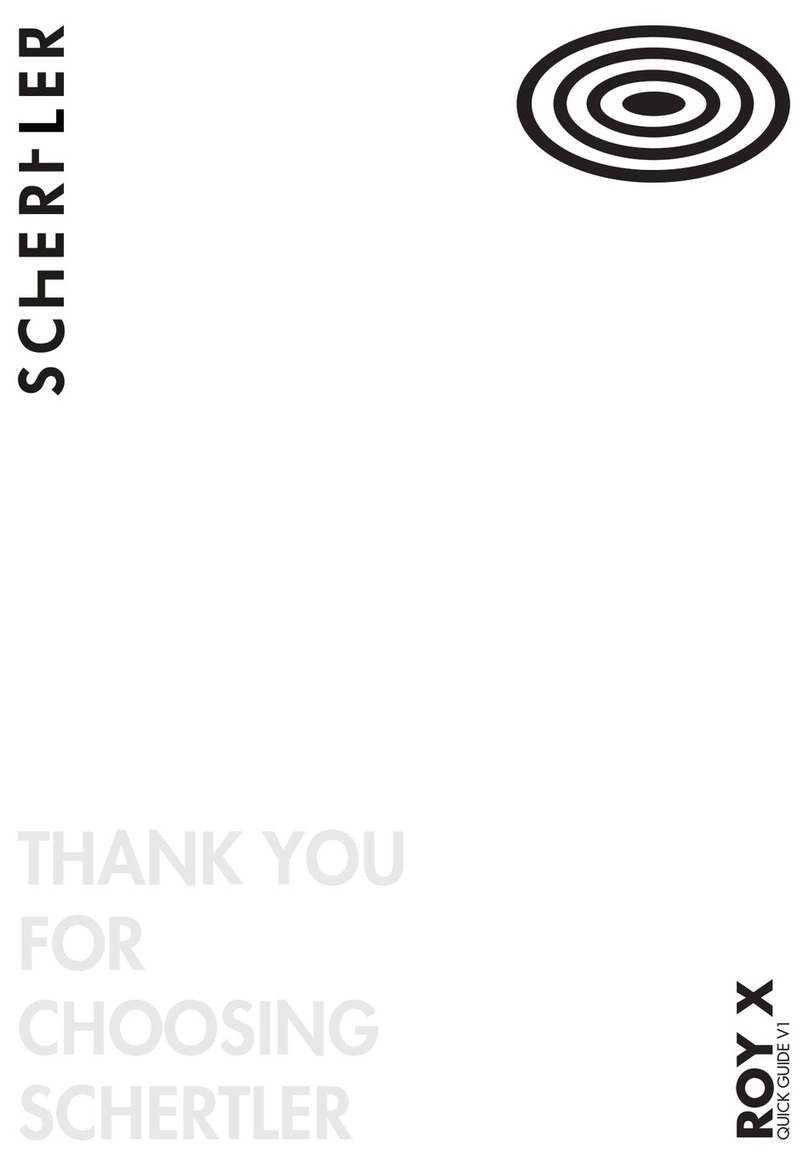
www.SteamPoweredRadio.Com
•
• W h
en
you operate the
va
rious switches, it
is
suggested that you reduce
the volume first by turning the VOLUME control counterclockwise.
1.
POWER
G)
POWER Switch
Raise
the lever
switch
to
ON
to turn the set on, push
it
down
to
OFF
to turn
it
off.
2.
SELECTING
SPEAKER
SYSTEMS
®
SPEAKERS
Switch
The set connects up to
two
pairs
of
speaker systems,
and this
switch
allows
selection
of
either
or
both
pairs
of
the connected speaker systems.
OFF: To
cut
off
the sound
from
the speaker systems
when
listening
with
headphones.
A: To
drive
the speaker systems connected
to
the rear-
panel
SPEAKERS
SYSTEM-A terminals.
B: To
drive
those connected to the SYSTEM-8 terminals.
A+ B: To
drive
both
A and B pairs
of
speaker systems
simultaneously.
3.
SELECTING
PROGRAM
SOURCE
@ SELECTOR Switch
Adjust
to the program source (except tape) you
wish
to
hear such
as
records and radio broadcasts
or
AUX.
PHO
NO-2,
PHO
NO-1: For playing records. The
im-
pedance
of
the
PHON0-1
circuit
can be
switched
over
with
the
PHON0-1
Pickup Load Switch on the
rear panel to match the impedance
with
the approved
. load resistance
of
the cartridge in
use
.
TU
NE
R: To hear radio broadcasts
through
a connected
tuner.
AU
X-1,
AU
X-2: To reproduce
whatever
program source
is
connected
to
the rear-panel AUX-1
or
AUX-2 inputs.
@
TAPE
PLAY Switch
Use
it
to reproduce a recorded tape
or
to
monitor
a
recording that you are making. Turn
it
to the
position
that covers the record/playback
circuit
connecting
the
tape deck in use at the
moment.
At
all
other
times,
leave it in the normal "SOURCE"
position
.
[>
When
one tape deck
is
connected
to
the set:
DECK-1, D
EC
K-2: To reproduce a recorded tape on the
tape deck connected to therear-panel
TAPE
DECK-1
or
TAPE
DECK-2 terminals.
SO UR
CE:
To hear the program source, selected
by
the
SELECTOR
switch.
[>
When
two
tape decks are connected to the set:
C
OPY
1
►
2:
To
dub
or
reprint
a recorded tape on the
tape deck (in playback
mode)
connected
to
the rear-
panel
TAPE
DECK-1
terminals
onto
a tape on
another
tape deck (in record
mode)
connected
to
the rear-
panel
TAPE
DECK-2 terminals.
D
EC
K-2: •To
monitor
a recording
as
you
dub
it
to
Deck 2 in record
mode
.
D
EC
K-1: To hear the program source
as
the signal
leaves Deck 1 in playback mode.
C
OPY
2
►
1:
To
dub
or
reprint
a recorded tape on the
deck connected
to
the rear-panel
TAPE
DECK-2 ter-
minals
onto
a tape on
another
tape deck connected
to the
TAPE
DECK-1 terminals.
D
EC
K-1: To
monitor
a recording
as
you
dub
it
to
Deck 1 in record mode.
D
EC
K-2:· To hear the program source
as
signal leaves
Deck 2 in playback mode.
eMonitoring
is
possible
only
if
the tape deck in record
mode
is
equipped
with
separate record and playback
heads.
4.
STEREO
VS.
MONO
®
MODE
Switch
When
you are
going
to
hear a stereo program source:
Leave this
switch
at NORMAL.
If
you have connected
the
left
and
right
speaker systems in reverse, set this
switch
to
REVERSE
to
restore the normal stereo effect
without
physically
changing the speaker connections.
When
you are
going
to
hear a
mono
program source:
Set
the
switch
to
MO
0,
then the
monophonic
mixture
of
the
left
and
right
channel signals
is
heard
from
both
speaker syste
ms
. The
switch
should be in this
position
to hear a
monophonic
source (record or tape) on a
turntable
or
tape deck, connected to
either
the l
eft
or
right
input
terminals on the rear panel.
e
To
hear
either
the
left
or
right
channel signal, turn
the BALANCE
control
fully
clockwise
or
counterclock-
wise.
5.
ADJUSTMENT
OF
VOLUME
@
VOLUME
Control
(J)
MUTING
Switch
The overall
volume
is
controlled
by
the VOLUME
control.
The
more
this
control
is
turned clockwise the
louder
the
volume
of
the sound becomes.
Use
the
MUTING
switch
when
you wish to reduce
the overall volume te
mporari
ly. This attenuates the
volume
by
30dB
' (
lower
position)
or
15dB
(upper
posi-
tion)
without
having to
touch
the main VOLUME con-
trol,
which
comes in very handy
when
you receive a
telephone call
or
to
eliminate
the
unp
leasant sounds
produced
when
the styl
us
is
lowered
onto
the surface
of
the record.
eAdjustment
of
the
volume
of
very
low
sounds
is
easily carried
out
by
adjusting the VOLUME
control
after the
MUTING
switch
has
been set to the '- 15dB'
position.
5
------------------------------------------------
